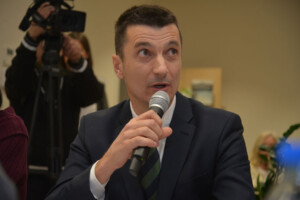I wasn’t yet old, but I was grumpy, and I’d noticed that the technology for production of electricity from small hydroelectric power plants doesn’t really have space to advance, and biogas technologies have begun to almost challenge the limits of theoretical physics; the hope that they would advance was akin to hoping we’d produce a spark by rubbing two eggs against one another.

We can only hope that the new policies will support only the pandemic-resistant renewable energy sources. Market price pandemic, that is. Otherwise, we will have to extend certain technologies’ quarantines. Ad infinitum.
The year is 2013. I was wondering what will happen when the sun sets on the state-provided incentive mechanisms for the use of certain technologies for renewable source energy production. I was wondering for dramatic effect, for it to remain in print. It hasn’t even occurred to me that, as the irony of fate will have it, we will be given the opportunity to pause, think, and consider how future policies will operate.
In 2009 the Serbian Government published A National Renewable Energy Directive, promoting electricity from renewable energy sources and combined production of electric and thermal energy. In simpler words – opening up the possibility to produce electric energy through technologies recognised in this document, and allowing us to purchase them at lower prices. Someone out there thought that this would encourage new technology development with hope and faith (and maybe a little bit of love) that their capital costs will eventually reduce, as a consequence of technological advancement, and that there will come a day when we will be able to utilise the energy from advanced technologies commercially.
I wasn’t yet old, but I was grumpy, and I’d noticed that the technology for production of electricity from small hydroelectric power plants doesn’t really have space to advance, and biogas technologies have begun to almost challenge the limits of theoretical physics; the hope that they would advance was akin to hoping we’d produce a spark by rubbing two eggs against one another. I mentioned the high operational costs of biogas technologies. The dogs bark and the caravan moves on, and as they say, so does the show.
The year is 2020. A pandemic. Someone out there thought that they could push the pause button on paying the renewable energy sources fees, and directed their manufacturers to sell their energy on the market. The UN published a socio-economic analysis of the impact of Covid-19, suggesting that manufacturers of wind, solar and hydro energies are experiencing lower income, but their business models have not been shaken. They are losing money by producing energy, but they would lose more money if they stopped producing. Part of the problem is, as they say, although it’s difficult to understand exactly why, caused by the pandemic, but another cause is actually a consequence of a long chain of supply and high operational costs (drumroll please). That is the UN system’s analysis. The same system was led by a rather curious moment of inspiration a few years ago, in cooperation with the Serbian government, and it has given funds to support biogas energies when the purchase price was too low to cover the manufacturing costs for this beautiful, yet unsustainably expensive, technology. They supported a technology which essentially creates loss by selling electric energy at market price, but cannot stop manufacturing when this price is lower than the costs. Technology without a market future.
The Republic of Serbia currently does not have policies in place to support producing renewable source energy.
We can only hope that the new policies will support only the pandemic-resistant renewable energy sources. Market price pandemic, that is. Otherwise, we will have to extend certain technologies’ quarantines. Ad infinitum. It’s not really fair, is it – how about we invest in helping those who are energy-poor and provide them with pollution-free heating.
Aleksandar Macura, programme director at the RES Foundation



Leave A Comment